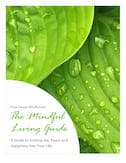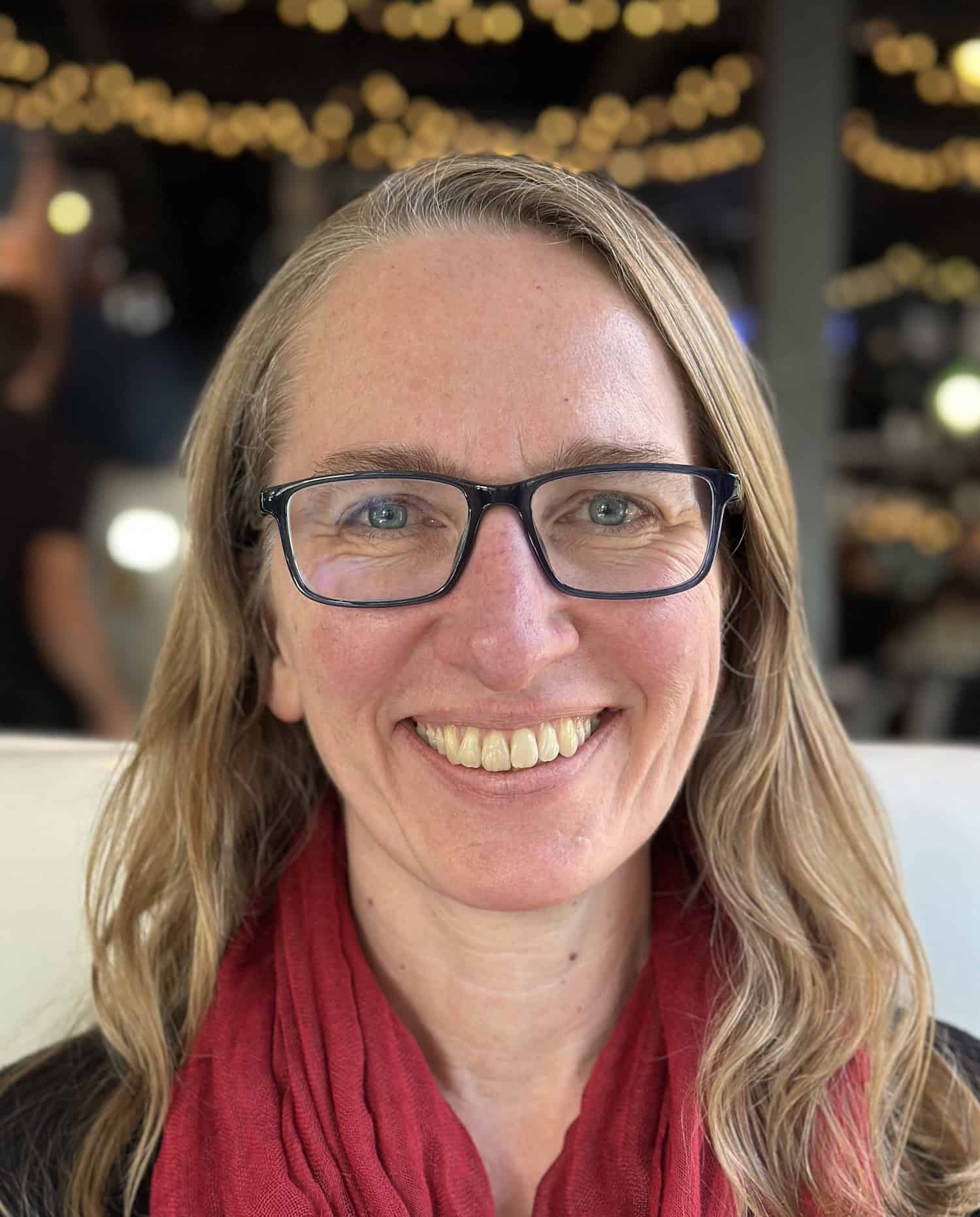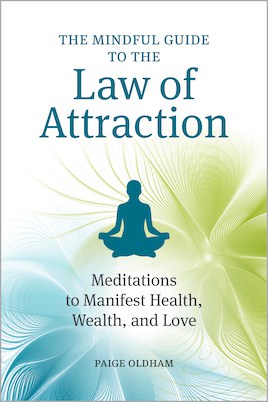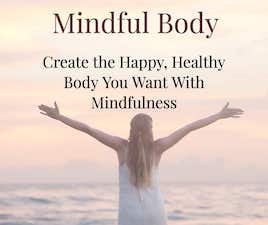“Be thankful for all the difficult people in your life, and learn from them. They have shown you exactly who you do not want to be.” – Unknown
I wrote an earlier (very popular) post about effective ways of dealing with difficult people. I described how to work through interactions with these people to change the usual negative outcomes into something more positive. At the end, I opened the door to the opportunities that these interactions offer us to learn more about ourselves.
Difficult people give us a chance to see ourselves differently. They reflect our dark parts back to us, stirring up deep emotions from fears we try hard to hide. It’s time we learned to open ourselves to their gifts.
Here are three ways we can learn from difficult encounters with other people.
1. Going To Your Dark Side
Difficult people wouldn’t bother us so much if there wasn’t something similar inside ourselves that was bothering us.
If you seem to be surrounded by difficult people or they show up frequently in your work and personal life, ask yourself what lessons you need to learn from them. These people will continue to show up for you until you take responsibility for your own being.
Catch yourself the next time you think or say, “It drives me crazy when people do/say…” There’s a nugget waiting to be discovered.
When was the last time you did/said that same thing? Maybe you can’t remember. I’ve seen people completely deny saying and doing things that the people around them observed. They deny it because their beliefs about themselves wouldn’t allow them to see themselves doing or saying those things. It sounds crazy, but I’ve experienced it on more than a few occasions.
For example, one person harshly criticizes another person. The criticized person repeats the criticism back verbatim and the criticizer denies saying anything like that. The criticizer sees themselves as a warm and caring person who couldn’t speak such harsh words. But they did speak those harsh words.
Open your mind to the possibility that you have those difficult qualities. If you didn’t, those difficult people wouldn’t bother you so much.
Look for that dark part of you that you try so hard to hide from the rest of the world. The more you try to hide it, the more havoc it will wreak on your life.
Take some time to be quiet with yourself. Meditate. Journal. Walk. Run.
Start a dialogue with that dark part of yourself. Ask it what it’s so scared of, why it’s hiding. Give it a safe place to be. Welcome it into the light. Talk with it as if it were a trusted friend. Listen deeply to the messages it gives you. Don’t allow your own fears to smother the messages by telling it that “everything will be okay.” This will only push that dark part of you back into its cave. You want it out in the light, revealing itself. That’s how you can see that it’s a friend, someone trying to help you. Learn everything you can from it and feel its love.
Once you fully accept that dark part of you as a friend and guide and it no longer retreats to its cave in fear, those kinds of difficult people will stop bothering you.
2. Hot Buttons
When someone hits one of your hot buttons, instead of reacting instinctively with anger or defensiveness and creating the same old argument, take a deep breath and consider why it’s a hot button. What fears or painful memories have you not dealt with? Whose ways of being have you subconsciously adopted that no longer work for you but you haven’t admitted it to yourself? What parts of you are you trying to hide that others can see?
My husband and I repeated many of the same arguments until I opened myself to this concept. He knew what my hot buttons were and would strike whenever he felt threatened. And I did the same.
Our relationship got to an extremely low point when I lost the will to argue. I was so tired of repeating the same negative patterns that I finally softened up and started looking for alternatives.
I thought: My husband is a pretty sharp guy. Why would he make up things about me to argue over? Yes, he was seeing me through his own lens, colored by his past, but could there be something there that I’ve missed all these years?
It’s so hard to see ourselves objectively. We see what we believe and our beliefs are clouded by a lifetime of false perceptions. If we were told that we weren’t very bright by our second grade teacher, we can carry that with us throughout our lives. It turns into beliefs like “I’m not good enough,” “I’m not smart enough” or “I’ll never achieve anything.” Even if the evidence in our life says otherwise, we carry those old beliefs with us and become blind to contrary facts.
I started to examine my hot buttons. I began to peel off the layers of false beliefs that hid my own truth from me. Instead of getting defensive and responding with such productive phrases as, “That’s just the way I am,” I looked for a different way. In many ways, I realized that I didn’t like “the way I am.” It took some courage to see that I had the ability to completely change “the way I am.”
The next time he hit one of those hot buttons, instead of getting defensive, I asked for clarification. I told him that I didn’t want to be that way anymore but I needed his help to change. I needed his objectivity and ideas for different ways of being. I thanked him for highlighting the issues for me and supporting me as I worked through my changes.
And the hot buttons stopped being hot buttons.
3. Who, Me???
Have you considered whether you’re the difficult person in other people’s lives? We’re usually so wrapped up in our own lives, fears, and insecurities that we don’t take the time to consider how we affect the people around us.
Do you have a hard time finding people to help you?
Do you frequently argue with others?
Do groups of people disburse or walk away when they see you coming?
Do people you consider to be friends have a hard time making time to see you or speak to you on the phone? They’ll come up with all kinds of polite excuses to get out of spending time with you. Notice if this is happening more often.
Take a closer look at the kinds of friends you’re attracted to. Like attracts like. Are these the kind of person you want to be?
Take a few moments throughout your day to notice how others are responding to you. What do you find?
Rather than blaming others for being however they’re being, take responsibility for your part in the interactions.
If you want things to be different, you have to be different first.
Don’t wait for other people and situations to be the way you want first. It won’t happen. That only creates anger and resentment.
Don’t deny someone the loving parts of you because you don’t think they deserve it. Be loving first because it’s the loving thing to do. Enjoy it simply because you’re a loving person. Let the other person react however they want without you taking anything personally.
Learn From Difficult People and Let Them Be
If you have recurring issues with difficult people, know that they’re there to help you, to guide you to a better place. Open yourself to their messages. Take responsibility for your part in the drama.
If you build walls around yourself to protect yourself from difficult people, you’ll be laying bricks for the rest of your life. These walls will also cut you off from people who love you and want to support you. It’s a lonely place.
When you understand the messages and act on them, you’ll have no need for walls. You’ll stop attracting the difficult people and situations.
Once you shine the light on your own dark places and give them a loving home, you’ll be loving and accepting yourself as you are. This is the first step toward being able to truly love and accept others for who they are.
And the difficult people will stop being so difficult.
Who can you learn from today? What messages will you open yourself to?
Create the life you want: Combine the law of attraction with mindfulness
The law of attraction suggests that our positive or negative thoughts bring about positive or negative experiences. My latest book, The Mindful Guide to Law of Attraction, pairs that belief with the powerful practices of mindfulness. Through intentional breathing, writing, and engaging, you’ll hone a method for manifesting health, wealth, and love―the elements of happiness.
Let the law of attraction work for you by adopting its basic steps of identifying and visualizing the things you desire. Then use 45 practical meditation techniques included in the book to achieve awareness. By concentrating your positive energy on obtaining your wants, you’ll give yourself permission to receive them.
To your happiness! ~Paige

You can find this book at Amazon, Barnes & Noble, Books-A-Million, and Indigo.






 The Mindful Living Guide
The Mindful Living Guide




Hi, i believe that i saw you visited my site thus i came to go back the prefer?.I am attempting to to
find things to improve my site!I assume its good enough to use a
few of your ideas!!
I’ve been exploring for a little bit for any high-quality articles
or blog posts on this sort of area . Exploring in Yahoo I ultimately
stumbled upon this site. Studying this information So i’m
glad to express that I have a very good uncanny feling
I discovered exactly what I needed. I such a lot indisputably
will make sure to don?t forget this web site and provides iit a look on a
constant basis.
This is a wonderful post, Paige. I was formerly the most difficult person in most people’s lives and I can very much vouch for what you’re saying here.
To look in the mirror, for me, was extremely painful, literally and metaphorically. Thus, whenever my relationships with others would show me aspects of myself, I would shudder.
The greatest leap of healing came from revealing that I was not, in fact, my behaviours, my thoughts, or my body. Only when I understood that “I” was not difficult – I was beautiful, strong, and whole – but my behaviours were, then change was easy.
Thank you again, my friend.
That’s a subtle yet quite powerful revelation Vironika! It took me years to let go of “that’s just the way I am” and to allow myself to change the way I am. Releasing that old belief opens the door to endless possibilities and much happiness.
May you always express your beautiful, strong and whole Self!
hmm, I’ll have to try and put this in practice, and soon. I’m going to move in as a room mate with my best friend and most infuriating person I know. Perhaps it’s because we’re so alike that we fight so much, I don’t have this relationship with anyone else in the world and never have before, so it’s pretty weird to me…
Anyways thanks for the great post I’ll give it a shot!
IMO, there’s a reason you’re together as “best friend and most infuriating person.” The Universe has put you together to learn and grow together. You might want to read my post: Your Best Weapon in an Argument as well.
Try being more mindful in your interactions to observe the source of your fights. What buttons are you allowing your friend to press and why are you choosing to be reactive? See each fight as a source of new knowledge about yourself.
How I wish I had read this a few days ago BEFORE I engaged with a difficult person. It would have helped a lot. I will try to remember this next time.
It’s never too late to learn the lessons Galen. Now you’re ready for the next time!
Hugs!!
Oh Paige…can I tell you how much I hate how RIGHT you are? Because I kind of want to dig in and just be right about what an obnoxious dolt someone in my life is. However, all that earns me is a headache, so I think I’ll choose Happy over Right.
Great piece!
Great choice Ellen! I know exactly what you mean. 🙂 Happy wins every time!
Great post Paige, and to be honest – scary. The idea of delving deep within to welcome and befriend my dark side scares the heck out of me. I know it’s work that I need to do on my spiritual journey and I agree that it’s important in so many ways, but I suppose I’m hesitant because I don’t know what the end result will be and I don’t want it to change the positive aspects of who I am. But then, I have to recognize that “who I am” encompasses everything – both light and dark.
I have a lot of work to do in this area! Now I need to build up the courage…
Yes, it is scary Christine, and fear of the unknown is a big one, but what’s the worst that could happen? In my experience, it can only enhance the positive aspects of you. Spending energy on hiding the dark sides of ourselves takes energy away from fully expressing our whole (great) selves. We can learn a lot from our dark sides as long as we’re open to the messages.
Rather than thinking of it as a big leap, break the process into baby steps. Each little step will bring you closer to knowing and accepting your full self.
Many blessings on your journey!!
They say that we tend to be friends with either people who mirror us, or people that have traits that we seek. If we continually find ourselves dealing with difficult people I believe one of the things we should change is ourselves.
Exactly Jamie! We are the sum of the five people we spend the most time with. If we don’t want to be like those five people, it’s time to make some internal changes to attract the people we want to be.
Thanks so much for being here and commenting!!
Yes, it can be painful to acknowledge, because I want so much to be an effective leader, but there are ways in which I think I drive people away by being overly solicitous and understanding, and holding back from firmly stating what my expectations are. This actually makes it difficult to inspire trust. Basically I need to practice being more bossy. 🙂
Chris,
I wouldn’t call it “being more bossy.” To be a leader, you need to show/tell people where you’re leading them. Part of that is telling them what you expect of them. I know I get a little peeved if someone I’m working for isn’t being completely clear about what they expect of me. If I don’t know what they expect, I can’t deliver on it and I’m left floating, wondering how I’m doing.
For example, if you were the captain of a ship and a crew showed up. What would happen if you just told them all to get on the boat and then sat around chatting with them? No one would know what they were supposed to do and you wouldn’t get anywhere.
It’s not bossy to tell people what you expect of them. It’s exactly what most people are looking to you for. You’re awesome enough for people to look up to you for inspiration and guidance.
Chris, you’ve got it in you to make it happen!
This is very timely as this is very relevant to the sessions that I’ve attended last time. We attended a training on Customer Experience, we have heard shared stories on difficult customers who have different perceptions and attitude. Reading your post, adds to our List in how to turn Bad Moments into Positive Moments. These people are in number, if we don’t know how to handle them, we will become bitter just like them. Be Positive!
Yes, Jacque, difficult people are everywhere. We all have a choice how we interact with them and what we take away from the experience. So glad I could be a source of turning bad into good! Thank you!!
And the difficult people will stop being so difficult.
I’d like to believe this but no so in my experience. If we can’t get away from always being right then we can’t work on our dark sides. My father is an arrogant man and at, 79, still believes he’s right and the rest of us are wrong. I can’t be in relationships with people who intimidate and have no humility. I usually attract these types so I stay away from intimate relationships as a rule.
Wisdomona,
Your father sounds a LOT like mine. And I used to attract others like him (usually bosses) until I learned to accept him the way he is, understand why he may be the way he is and have compassion for him. He remains “right” and will likely never change. For me, he’s toxic and I have significantly limited my exposure to him.
When I say that “difficult people will stop being so difficult” I don’t mean that they’ll change (few do). I mean that they stop causing such an emotional response within us because we do our own internal work to clear the issues we have.
My father used to drive me crazy. I would get so angry and frustrated simply trying to speak with him. I worked with myself to understand why I allowed him to elicit those emotions in me. Once I cleared those fears and accepted myself more fully, his words stopped bothering me. He’s still the same person, saying the same things but none of it bothers me anymore.
Rather than building a wall around yourself to keep out all intimate relationships (what my mother did), you might want to consider what’s inside of you that feels so threatened by these kinds of people and clear that. This work takes time and it’s not easy but it’s so worthwhile. As with my father, I don’t think anyone should stay in a toxic relationship but if you attract similar personalities, there’s something going on inside you that attracts them.
My husband used to bring out these same negative emotions in me until I did the work on myself. Now we have an amazing relationship. He’s done a lot of his own work and we’re both a work in progress.
I’ve seen and lived with people who build walls around themselves for protection. I used to be one and, for me, it wasn’t the way I wanted to live. I was determined to find a better way and I did.
Many blessings to you Wisdomona!
Paige….It took me many years to integrate this concept into my practice. Whenever I have any negative or positive reaction to another person….it is always a mirror of myself. The real work and gift …as you said….is that the difficult people who show up in our life gives us the opportunity to do some rugged spiritual work on ourselves. What better gift can we ask for than that if we’re adamant about making it through the dark forest to the other side…and be transformed. Thanks for reminding us of this…and yes, I do remember your last post on this subject. xxoo-Fran
You’ve been on quite the journey and your outlook on life definitely shows it, Fran – happy, inspired and motivating so many others to make the changes necessary to live their best lives.
As you said, seeing difficult people as a gift instead of a burden can light the way to happiness.
Big Hugs!!
Great thoughts in here, Paige! It’s really hard for me to allow someone else to be a mirror for me because – eek! – I might see my own darkness.
But, you know what? If you shed a little light in there, it’s not so dark after all . . .
How ’bout that?
😉
That’s great Bobbi! Most of our fears aren’t very scary when we “look them in the eye” or shed some light on them. We’ve all got our dark places and layers to peel off.
Big Hugs!